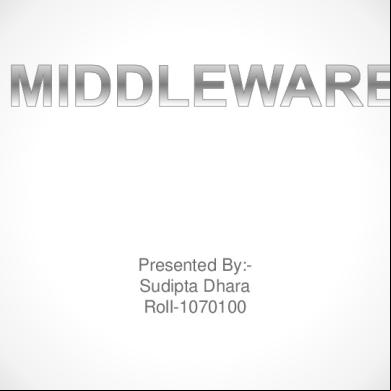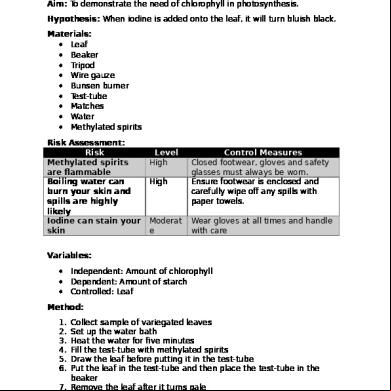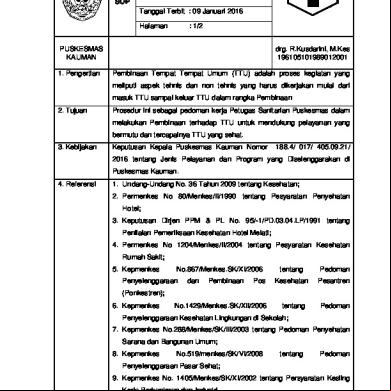Lan.ppt u522z
This document was ed by and they confirmed that they have the permission to share it. If you are author or own the copyright of this book, please report to us by using this report form. Report l4457
Overview 6h3y3j
& View Lan.ppt as PDF for free.
More details h6z72
- Words: 644
- Pages: 19
LAN is a datacomm system allowing a number of independent devices to communicate directly with each other, within a moderately sized geographic area over a physical communications channel. • A LAN usually connects servers, workstations, printers, and mass storage devices, enabling s to share the resources. • Most local area networks are built with relatively inexpensive hardware such as Ethernet cables, network adapters, and hubs.
LAN APPLICATIONS: • Personal computer LANs – low cost – limited data rate • Back end networks – Interconnecting large systems (mainframes and large storage devices). • high data rate • high speed interface • distributed access • limited distance • limited number of devices
LAN ACCESS PROTOCOLS : 1. Ethernet 2. Token ring 3. FDDI (Fiber Distributed Data Interface)
LAN TOPOLOGIES: 1. BUS
2. RING
3. STAR
4. TREE
BUS TOPOLOGY • Used with multipoint medium • Allows for transmission and reception •Avoids collisions and hogging. • Terminator absorbs frames at end of medium.
RING TOPOLOGY • A closed loop of repeaters ed by point to point links • Receive data on one link & retransmit on another – links unidirectional – stations attach to repeaters • Media access control determines when a station can insert frame
STAR TOPOLOGY • Each station connects to central node – usually via two point to point links. • Either central node can broadcast – only one station can transmit at a time. • central node can act as frame switch
TREE TOPOLOGY • Used with multipoint medium • Heard by all stations • Full duplex connection between station and tap • Need to regulate transmission • Tree is a generalization of bus
HARDWARE COMPONENTS of a local area network… A local area network is made of computers linked by a set of software and hardware elements. The hardware elements used for connecting computers to one another are: The network card: This is a card connected to the computer's motherboard, which interfaces with the physical medium, meaning the physical lines over which the information travels The socket: This is the element used to mechanically connect the network card with the physical medium. The physical connection medium: The main physical media used in local area networks are: •Coaxial cable •Twisted pair •Fiber optics
LAN’s TRANSMISSION MEDIA… Twisted pair Voice grade unshielded twisted pair (UTP) – Cat 3 phone, cheap, low data rates Shielded twisted pair – more expensive, higher data rates.
Coaxial cable Baseband coaxial cable – uses digital signaling – original Ethernet Broadband coaxial cable – as in cable TV systems – analog signals at radio frequencies – expensive, hard to install & maintain. Optical fiber – security, high capacity, small size, high cost
DEVICES USED FOR CONNECTIVITY…
LAN PROTOCOL ARCHITECHTURE…
LAN PROTOCOLS IN CONTEXT…
MAC FRAME FORMAT…
• MAC layer detects errors and discards frames
Connection of Two LANs
Why High Speed LANs? How’s the weather in Seattle, Mar?
• Speed and power of PCs has risen – Graphics-intensive applications & GUIs. • LANs are essential for client/server computing
[email protected] Ethernet
• Now have requirements for – centralized server farms
Network
Ethernet (CSMA/CD) • Developed by – Xerox - original Ethernet – IEEE 802.3 • Carrier Sense Multiple Access with Collision Detection (CSMA/CD)
Tokenring
MSN Messenger
[email protected]
Large LAN Organization Diagram :
SUMMARY •LAN is a computer network covering a small physical area, like a home, office, or small group of buildings, such as a school, or an airport. • LAN usually links computers (or resources such as printers) using a wired transmission medium (most frequently twisted pairs or coaxial cables). • Logical topologies 1. Ethernet 2.Token Ring (10mbps,100mbps) (16mbps)
3. FDDI (100mbps)
• Carrier Sense Multiple Access with Collision Detection (CSMA/CD) • Packets routed based on physical address (MAC). • Ethernet technologies – CSMA/CD media access – 10Mbps Ethernet – 100Mbps Ethernet – 1Gbps Ethernet – 10Gbps Ethernet
LAN APPLICATIONS: • Personal computer LANs – low cost – limited data rate • Back end networks – Interconnecting large systems (mainframes and large storage devices). • high data rate • high speed interface • distributed access • limited distance • limited number of devices
LAN ACCESS PROTOCOLS : 1. Ethernet 2. Token ring 3. FDDI (Fiber Distributed Data Interface)
LAN TOPOLOGIES: 1. BUS
2. RING
3. STAR
4. TREE
BUS TOPOLOGY • Used with multipoint medium • Allows for transmission and reception •Avoids collisions and hogging. • Terminator absorbs frames at end of medium.
RING TOPOLOGY • A closed loop of repeaters ed by point to point links • Receive data on one link & retransmit on another – links unidirectional – stations attach to repeaters • Media access control determines when a station can insert frame
STAR TOPOLOGY • Each station connects to central node – usually via two point to point links. • Either central node can broadcast – only one station can transmit at a time. • central node can act as frame switch
TREE TOPOLOGY • Used with multipoint medium • Heard by all stations • Full duplex connection between station and tap • Need to regulate transmission • Tree is a generalization of bus
HARDWARE COMPONENTS of a local area network… A local area network is made of computers linked by a set of software and hardware elements. The hardware elements used for connecting computers to one another are: The network card: This is a card connected to the computer's motherboard, which interfaces with the physical medium, meaning the physical lines over which the information travels The socket: This is the element used to mechanically connect the network card with the physical medium. The physical connection medium: The main physical media used in local area networks are: •Coaxial cable •Twisted pair •Fiber optics
LAN’s TRANSMISSION MEDIA… Twisted pair Voice grade unshielded twisted pair (UTP) – Cat 3 phone, cheap, low data rates Shielded twisted pair – more expensive, higher data rates.
Coaxial cable Baseband coaxial cable – uses digital signaling – original Ethernet Broadband coaxial cable – as in cable TV systems – analog signals at radio frequencies – expensive, hard to install & maintain. Optical fiber – security, high capacity, small size, high cost
DEVICES USED FOR CONNECTIVITY…
LAN PROTOCOL ARCHITECHTURE…
LAN PROTOCOLS IN CONTEXT…
MAC FRAME FORMAT…
• MAC layer detects errors and discards frames
Connection of Two LANs
Why High Speed LANs? How’s the weather in Seattle, Mar?
• Speed and power of PCs has risen – Graphics-intensive applications & GUIs. • LANs are essential for client/server computing
[email protected] Ethernet
• Now have requirements for – centralized server farms
Network
Ethernet (CSMA/CD) • Developed by – Xerox - original Ethernet – IEEE 802.3 • Carrier Sense Multiple Access with Collision Detection (CSMA/CD)
Tokenring
MSN Messenger
[email protected]
Large LAN Organization Diagram :
SUMMARY •LAN is a computer network covering a small physical area, like a home, office, or small group of buildings, such as a school, or an airport. • LAN usually links computers (or resources such as printers) using a wired transmission medium (most frequently twisted pairs or coaxial cables). • Logical topologies 1. Ethernet 2.Token Ring (10mbps,100mbps) (16mbps)
3. FDDI (100mbps)
• Carrier Sense Multiple Access with Collision Detection (CSMA/CD) • Packets routed based on physical address (MAC). • Ethernet technologies – CSMA/CD media access – 10Mbps Ethernet – 100Mbps Ethernet – 1Gbps Ethernet – 10Gbps Ethernet





